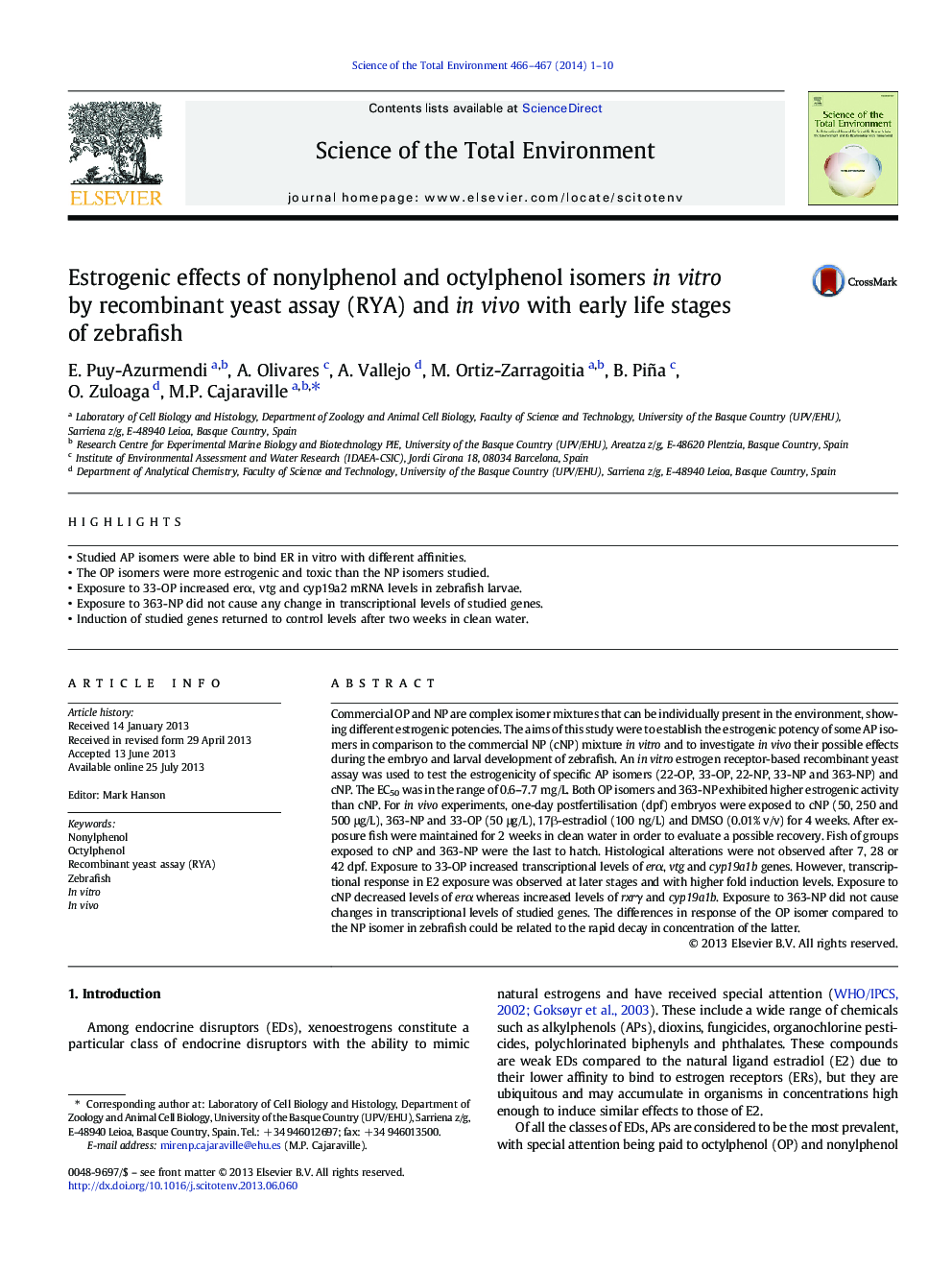| Article ID | Journal | Published Year | Pages | File Type |
|---|---|---|---|---|
| 6332100 | Science of The Total Environment | 2014 | 10 Pages |
Abstract
Commercial OP and NP are complex isomer mixtures that can be individually present in the environment, showing different estrogenic potencies. The aims of this study were to establish the estrogenic potency of some AP isomers in comparison to the commercial NP (cNP) mixture in vitro and to investigate in vivo their possible effects during the embryo and larval development of zebrafish. An in vitro estrogen receptor-based recombinant yeast assay was used to test the estrogenicity of specific AP isomers (22-OP, 33-OP, 22-NP, 33-NP and 363-NP) and cNP. The EC50 was in the range of 0.6-7.7 mg/L. Both OP isomers and 363-NP exhibited higher estrogenic activity than cNP. For in vivo experiments, one-day postfertilisation (dpf) embryos were exposed to cNP (50, 250 and 500 μg/L), 363-NP and 33-OP (50 μg/L), 17β-estradiol (100 ng/L) and DMSO (0.01% v/v) for 4 weeks. After exposure fish were maintained for 2 weeks in clean water in order to evaluate a possible recovery. Fish of groups exposed to cNP and 363-NP were the last to hatch. Histological alterations were not observed after 7, 28 or 42 dpf. Exposure to 33-OP increased transcriptional levels of erα, vtg and cyp19a1b genes. However, transcriptional response in E2 exposure was observed at later stages and with higher fold induction levels. Exposure to cNP decreased levels of erα whereas increased levels of rxrγ and cyp19a1b. Exposure to 363-NP did not cause changes in transcriptional levels of studied genes. The differences in response of the OP isomer compared to the NP isomer in zebrafish could be related to the rapid decay in concentration of the latter.
Related Topics
Life Sciences
Environmental Science
Environmental Chemistry
Authors
E. Puy-Azurmendi, A. Olivares, A. Vallejo, M. Ortiz-Zarragoitia, B. Piña, O. Zuloaga, M.P. Cajaraville,
